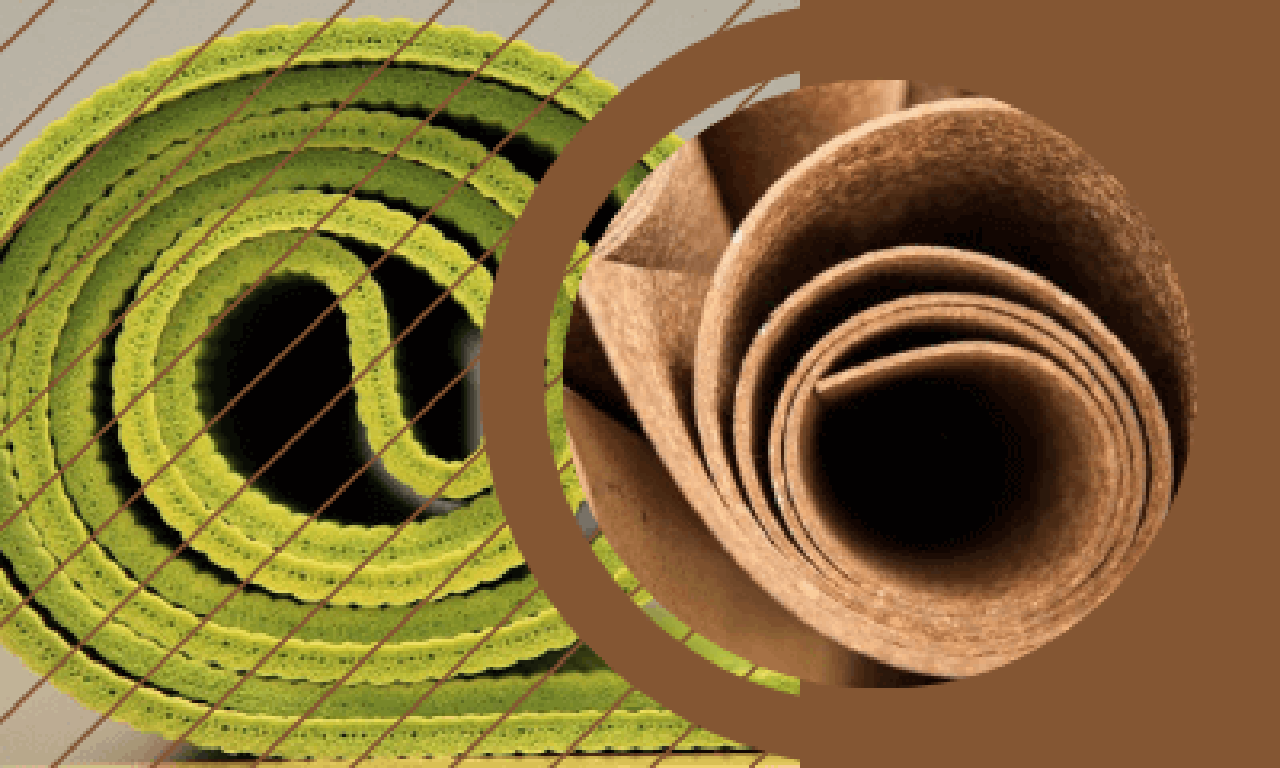Is your Yoga Mat eco-friendly?
-
Roopashree Sharma
- Posted on
- 0 comments

“THE BODY IS YOUR TEMPLE. KEEP IT PURE AND CLEAN FOR THE SOUL TO RESIDE IN .”
BKS IYENGAR
Practicing yoga is said to bring peace and mindfulness, and strengthen your connection with the environment. It is thus important to look after the nature around you while looking after yourself. Picking the right mat should enhance your practice as well as provide all the other benefits. Thus, choosing a natural mat is the perfect way to move towards a healthier planet and you!
Everyone wants a yoga mat in the color and texture they like, one that suits their preference. There are also a number of things you look for before buying your mat: stability, grip, and thickness. However, another important aspect for you to look at is its impact on the environment.
The most commonly used material in mats is Polyvinyl Chloride (PVC), which is one of the most toxic consumer plastics. Breathing is the most important practice during your session, but you may be breathing a chemical that may be highly hazardous to your health.
PVC is an absolute disaster. From a health and environmental viewpoint, it is not safe to make, use, or destroy. Since it has a low price and is cheap to use, it is widely used in the making of yoga mats. Recycling these mats is almost impossible and when buried or burned, it releases harmful dioxins, known as carcinogens.
Every time you do a downward dog or a cobra pose and get up with itchy skin, the problem may lie in your mat. Yoga is a means of feeling good, taking care of yourself, and ensuring good health, but your yoga mat might be putting that in jeopardy!
Picking the right mat for yourself is very important and for this reason, there are alternate eco-friendly mats that you can use to protect yourself and the environment, without giving up your healthy and feel-good asanas.
- Thickness- A thick mat may be more comfortable and may prevent injury to your knees. However, your connection to the floor might be in question and thus might be a little wobblier. Thin mats or ‘travel mats’ may be a good option if you are low on storage space.
- Material- there are a variety of natural yoga mats today that are a good option as compared to the old PVC mats. It’s important in terms of texture, sponginess, and wearing out over time.
- Rubber mats- can be natural or synthetic. It is renewable and contains no PVC. However, if you’re allergic to latex, you might want to avoid these mats.
- Organic cotton mats- these mats are washable, recyclable, sustainable, and provide the highest sweat absorption. However, it may be slippery as compared to other mats and is thus a good option if you’re practicing in the garden.
- Cork mats- are now a growing trend. It is sustainable and more durable than rubber mats. It provides a good grip and is absorbent.
- Eco-friendliness- while working towards taking care of ourselves and maintaining good health, we must also be aware of the impact it has on the environment. Avoiding PVC-made mats and switching to more natural materials, will do greater good to ourselves as well as the environment.
Progress is impossible without change. To become a better, safer and greener planet, we must be part of something bigger. Focus your attention on being a better version of yourself as well as making the planet a better place to live in. We have one life and one planet, let’s protect both while we can.
Check what type of clothes we should wear for Yoga





